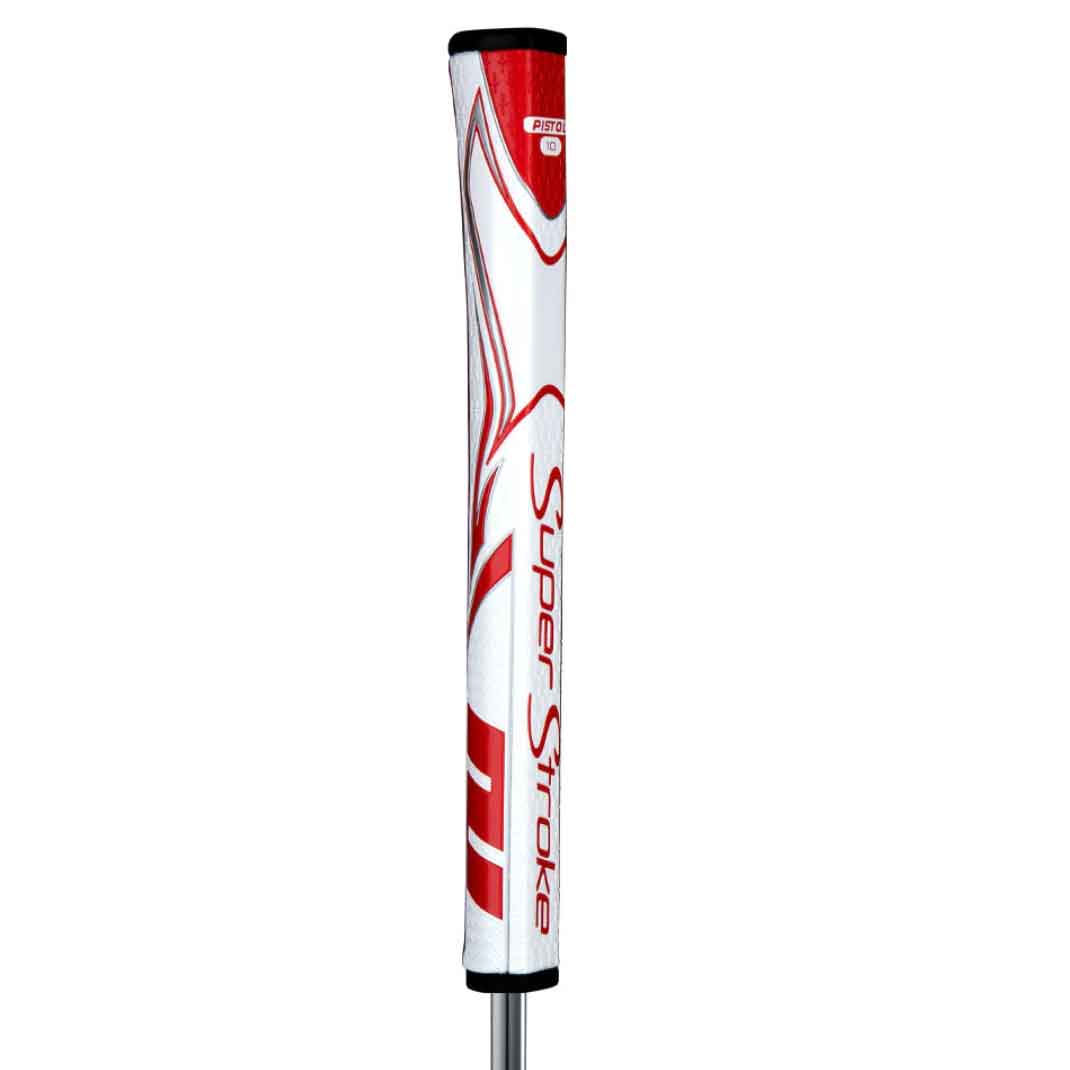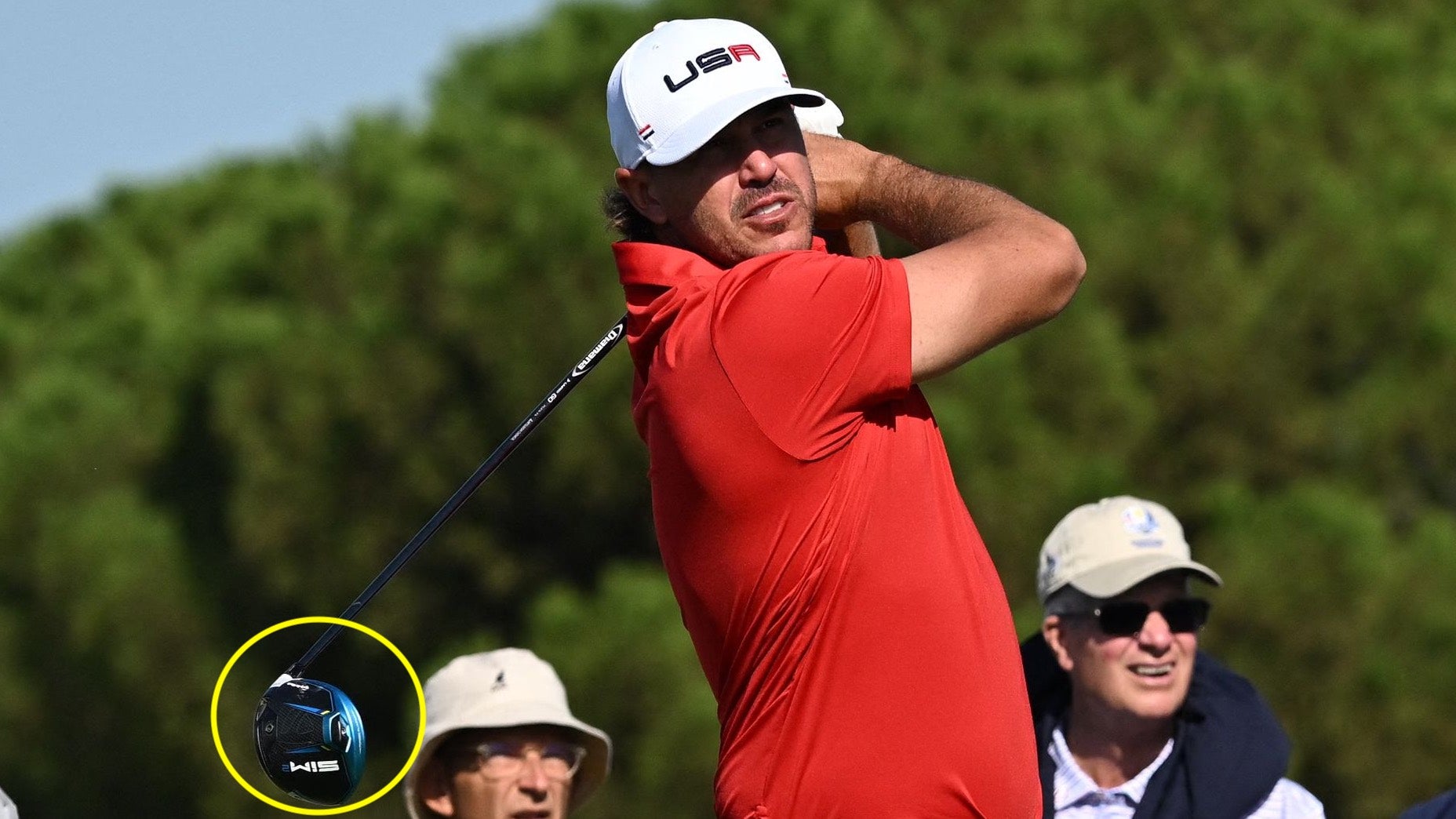Welcome to Wall-to-Wall Equipment, the weekly gear wrap-up in which GOLF equipment editor Jonathan Wall takes you through the latest trends, rumors and breaking news.
Still searching
Scottie Scheffler’s search for an obedient putter continued at the Ryder Cup, where the 27-year-old tried to combine something old and new in another attempt to jumpstart the flatstick. The latest putter shakeup saw Scheffler return to an Anser-style Scotty Cameron Super Rat 1 — the same putter he used prior to earning his 2020 Tour card — with a larger SuperStroke Zenergy Tour 2.0 grip.
The grip change just happened to coincide with Scheffler linking up with putting coach Phil Kenyon, who had Scheffler choking down on the grip to increase his upper body tilt and get the putter more aligned with his forearms. The change also moved the toe of the putter from slightly up in the air to soled at address.
“I called [Phil] maybe Monday after the Tour Championship,” Scheffler said. “It was something that I didn’t want to think about as the year went on because it would have been a change, but right when the Tour Championship ended, I was just thinking about it and I was like, oh, I’ll see what he’s up to. And he ended upcoming to Dallas a few days later, and we got some good work in. And it’s been great. He’s a fascinating person to work with.”

SuperStroke Putter Grips
In addition to setup changes, the larger grip is designed to reduce wrist movement and engage the larger muscles. It’s an easy way to ensure the golfer isn’t getting overly “handsy” during the stroke. While the adjustments are small, they’re designed to help Scheffler get back on track without making wholesale changes.
Scheffler debuted the new putter and setup in Rome and earned one point (two ties) from four matches — a small sample size, to be sure.
With Scheffler expected to take a breather following the biennial matches, gearheads will have to wait and see if the putter remains in the bag for his next Tour start.
Not a SIMulation

In a move that surely raised some eyebrows, Brooks Koepka swapped his Srixon ZX5 LS MKII driver for TaylorMade’s SIM2 the week prior to the Ryder Cup.
Koepka is under contract with Cleveland/Srixon, but it’s important to note he has a history with adding TaylorMade that dates back to his time as an equipment free agent when he won four major championships in three years. Even when he inked a multi-year deal with Cleveland/Srixon at the end of 2021, Koepka retained the 16.5-degree TaylorMade M2 Tour HL fairway wood from his previous setup.
While the SIM2 likely felt like a new addition, Koepka actually chose to reinsert the two-year-old driver last week during LIV’s Chicago event to see how it performed. He finished T24, eight shots back of eventual winner Bryson DeChambeau.
Something else that’s worth pointing out? This is actually the second TaylorMade driver Koepka has used in the last year, dating to the 2022 U.S. Open where he briefly played an older model TaylorMade M5 driver before making the eventual transition into ZX5 LS MKII.
Shedding weight

When Collin Morikawa’s putter is red-hot, he’s practically unbeatable. The problem is those days haven’t been as plentiful as Morikawa and instructor Stephen Sweeney would like. The pair have spent countless hours trying to come up with a solution, taking a closer look at the setup and grip to see if they could find a long-term remedy.
What Morikawa has refrained from doing during his time with Sweeney is endlessly tinkering with the putter — something he did on numerous occasions during the 2022 season. Morikawa has remained loyal to TaylorMade’s TP Soto (L-Neck) with an LA Golf putter shaft — he started using the shaft during the 2022 Presidents Cup — but as Sweeney told GOLF.com, he started to pick up on a potential problem with the overall weighting.
More specifically, the carbon putter shaft he was using at the time.
Carbon composite putter shafts have risen in popularity over the past several years, due in part to their ability to reduce torque (how much the putter rotates at impact) and provide impressive consistency. Morikawa saw the benefits as well, but something still felt “off” during the stroke.
“We wanted to make a change because he didn’t feel comfortable,” Sweeney said. “His putter head is relatively light and the shaft was very heavy, so then the head felt very light. That meant it was hard to gauge where it was in space and in his stroke. His putting was inconsistent as far as speed control goes. If he had to load the putter to add speed, he didn’t have a sense of how far to take it back.“
As Sweeney confirmed, he and Morikawa started discussing different shaft options just before the Open Championship. They reached out to a few different shaft manufacturers to see if they could send along shafts for Morikawa to test on his own time — including Mitsubishi Chemical, who embraced the challenge of building something completely custom to meet the 26-year-old’s needs.
“When I contacted Mitsubishi they basically expressed enough interest that they decided they would make a custom shaft based on what I figured he needed, using player feedback from Collin and based on previous testing,” Sweeney said. “They went above and beyond to create 1 of 1 putter shaft. That’s not something that companies do, that I know of.”
The collaboration between Morikawa, Sweeney and Mitsubishi resulted in a Diamana prototype putter shaft that’s a “different makeup” and roughly 20 grams lighter — Morikawa’s new shaft is about 105 grams — than the model he used this season.
The cosmetics and full-length carbon fiber plies — used to create a smooth EI for feedback and feel purposes — still match up with the retail Diamana putter shaft, but the overall design is specifically geared for Morikawa. It’s one of the many benefits of being one of the best golfers on the planet.
“It’s lower torque but with a little more flex,” said Sweeney. “It increases the swing weight so that head feels heavier actually being heavier. His stroke length and speed control have improved dramatically because of it. This will be his first tournament with it in play.”
Leading the pack
Equipment manufacturers take a backseat during the Ryder Cup when it comes to promoting their staffers. With pros sporting red, white and blue or blue, yellow and white, it’s difficult to pick up on gear trends, unless you know what you’re for.
During the biennial matches, one trend that stood out was the sheer number of Titleist drivers being used by members on both teams. In total, Titleist had 10 drivers in play at Marco Simone, four more than the next closest competitor.
Justin Rose using @Titleist TSR3 in Rome. Quick look at the specs on his driver:
— Jonathan Wall (@jonathanrwall) September 29, 2023
Loft: 9 degrees
Shaft: PX HZRDUS Black 4G 60TX
SureFit hosel: B2
SureFit CG: H1 pic.twitter.com/Ism00Ubvy6
Of those 10 Titleist driver users, five were playing the driver without an agreement. The list includes Matt Fitzpatrick, Robert MacIntyre, Justin Rose, Ludvig Aberg and Patrick Cantlay.
Having one-third of the victorious European Ryder Cup team playing your driver for free is always a good thing.
Big stats

Justin Rose has recorded just two wins in the last four years, which somewhat overshadows his incredible putting prowess with an Axis1 Rose putter during the same four-plus-year period.
During the Ryder Cup, Rose led the biennial matches in Strokes Gained: Putting (plus-4.95) while recording one big putt after another for three days. The week was a continuation of an incredible run with the putter that dates back to his switch to an Axis1 Rose model in 2019.
Since 2019, Rose has led the major championships with a combined 54.65 strokes gained on the field with the putter. He ranked 1st in SG:P at this year’s Masters and led the Tour in makes from 20-25 feet during the 2023 season.
Rose’s overall body of work led some to question if he deserved a spot on the European Ryder Cup team before the week commenced. Those questions were put to rest with the help of a trusty putter that, once again, did all the talking.
Want to overhaul your bag for 2023? Find a fitting location near you at True Spec Golf.










